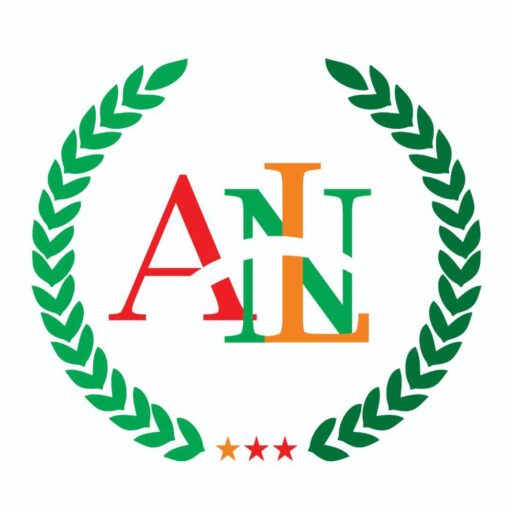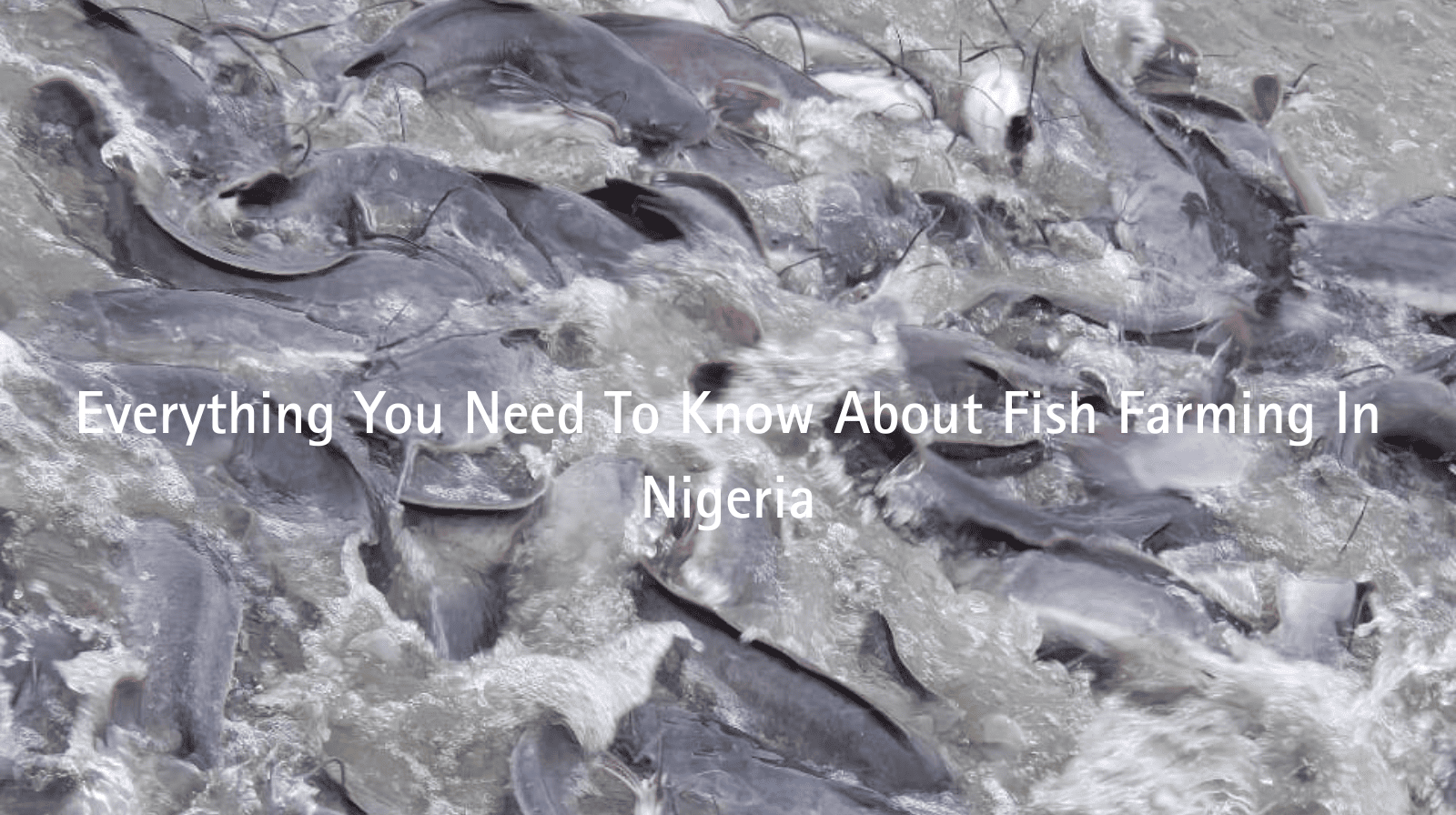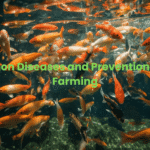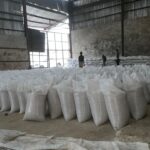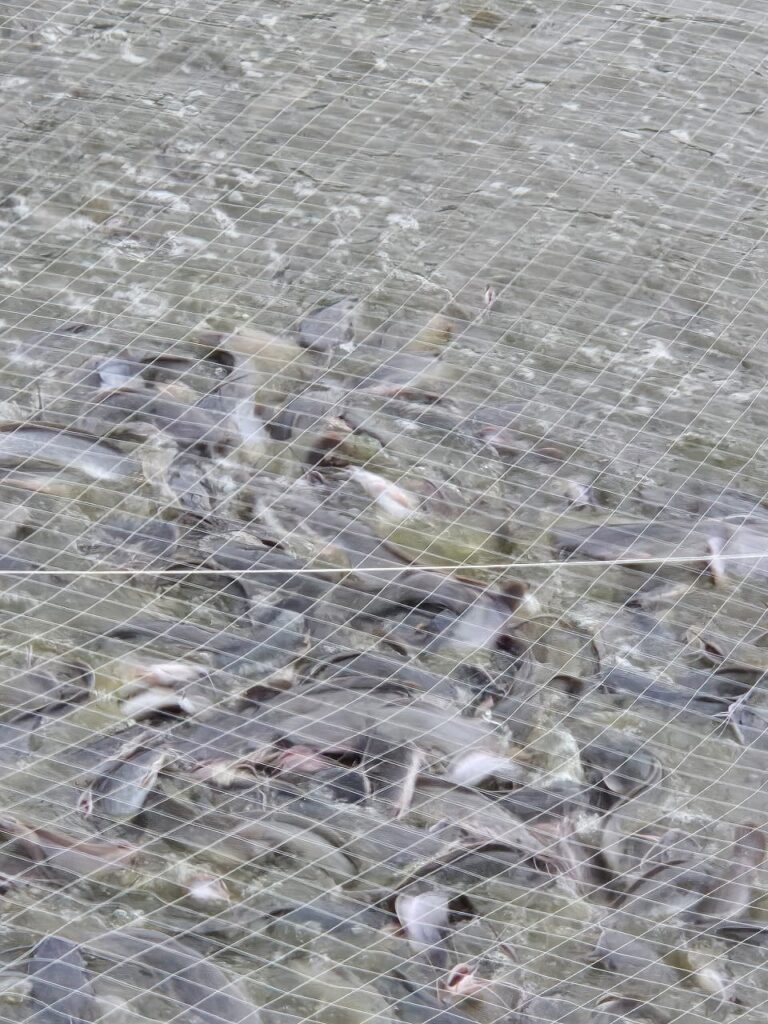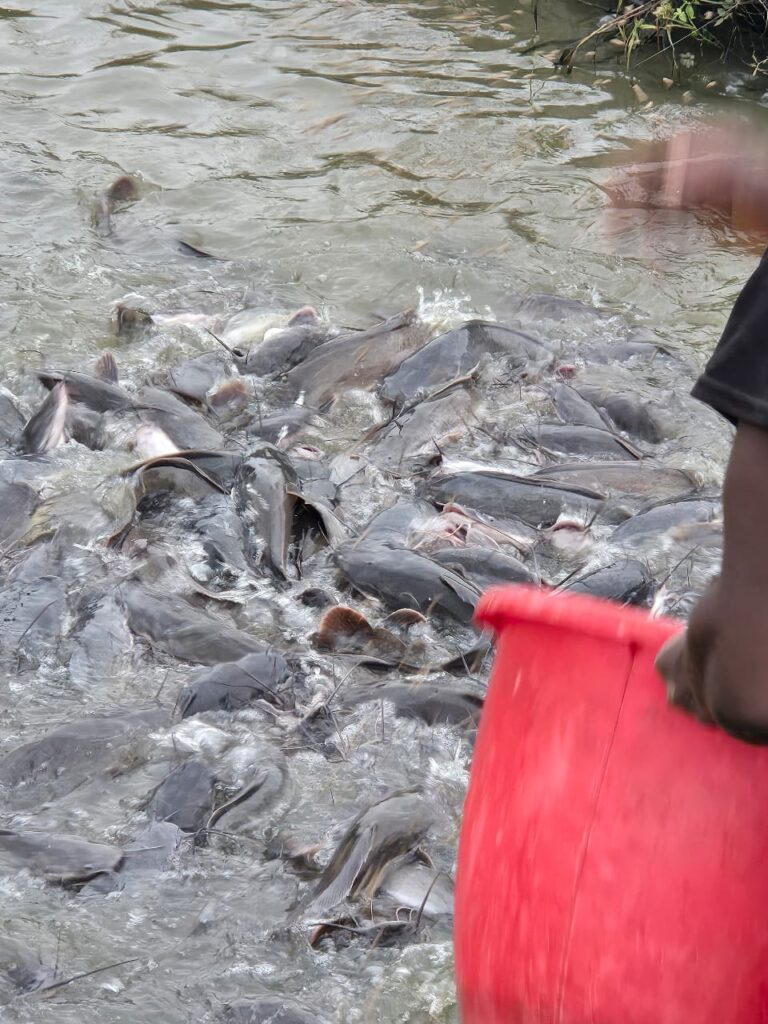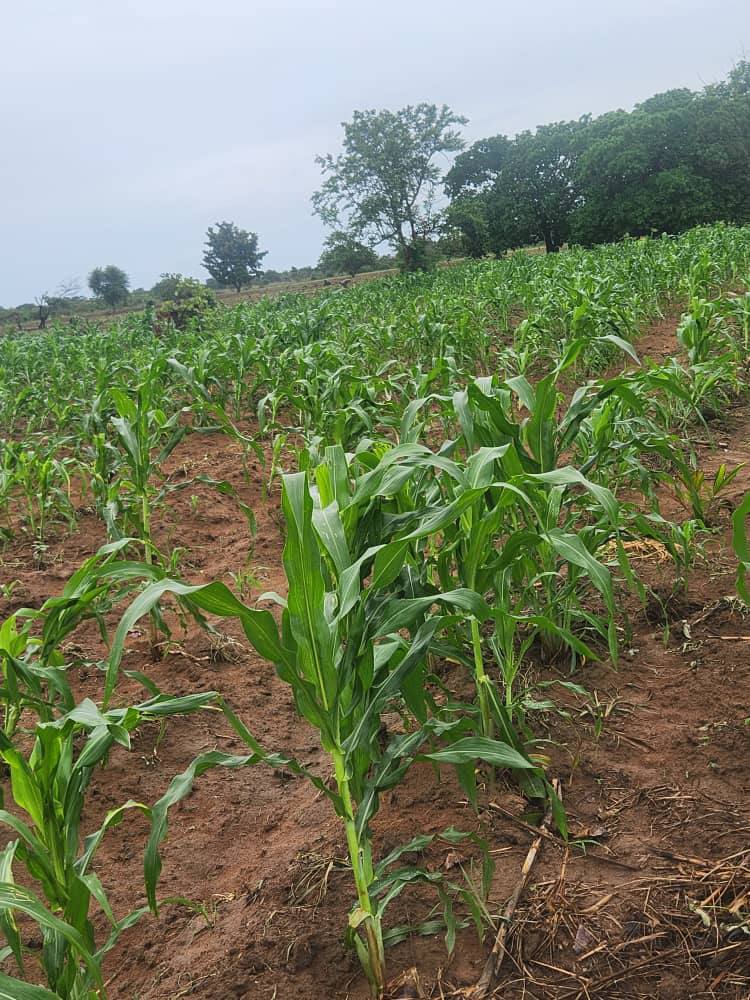Fish farming is one of the most lucrative agribusinesses in Nigeria due to the high demand for healthy animal protein. It refers to the process of rearing fish in controlled environments like ponds, tanks, etc., for commercial purposes. In this guide, we will walk you through everything you need to know about fish farming in …
Fish farming is one of the most lucrative agribusinesses in Nigeria due to the high demand for healthy animal protein. It refers to the process of rearing fish in controlled environments like ponds, tanks, etc., for commercial purposes. In this guide, we will walk you through everything you need to know about fish farming in Nigeria.
Types of fish farming
Different species of fish are farmed; however, in Nigeria, below are the commonly farmed species:
1)Catfish Farming In Nigeria
This is one of the most popular types of fish farming. It involves growing catfish in a controlled environment, like ponds and tanks, to table size, marketing them, and selling at good prices. It can be reared in small or large scale for either personal consumption or for sale. Catfish Farming involves buying and breeding fingerlings or juveniles to the maturation stage.
2) Tilapia fish farming
This is one of the common fish types cultivated in Nigeria. It involves raising tilapia fish in controlled environments like ponds and tanks to table-size, marketing, and subsequently selling them to make a profit. Tilapia have only five basic needs, which are clean water, oxygen, food, light, and room to swim.
3)Salmon(Mackerel) Farming
Salmon (Mackerel) is widely known as Titus in Nigeria. Salmon farming involves raising salmon to harvestable size, which takes around three years. They are farmed in fresh water for about one to two years, which takes place in controlled environments, and then the farmed salmon are transported to seawater, where they stay till harvest. Once the salmon reach harvestable size, they are transported for sale.
Best fish breeds for Nigerian farmers
Different species of fish can be reared; however, not all can be reared in Nigeria due to the weather and climate conditions of Nigeria. The commonly reared breeds are :
1. Catfish
This is one of the most reared fish breeds in Nigeria. There’s a very high demand for catfish in Nigeria due to its affordability and nutritional value. They also have a rapid growth rate. This makes them ready for sale within a short period of time, thereby allowing fish farmers to make more profit.
In addition, Catfish are known for their relatively simple breeding process compared to other breeds. This makes it suitable and easy for both beginners and experienced fish farmers to breed them.
The common species of catfish are Clarias gariepinus, Heterobranchus bidorsalis, and Heterobranchus hybrid.
For a detailed guide on how to start catfish farming in Nigeria without a Capital, click here!
2. Tilapia
This is yet another good fish feed breed commonly reared in Nigeria. They are cultivated because of their rapid growth, high nutrition, and large size. They are hardy and have good disease resistance to certain diseases compared to other breeds, thereby reducing potential losses due to disease.
Tilapia breeds that are commonly reared include Nile Tilapia and Blue Tilapia.
3. Salmon
This breed can only be cultivated in freshwater bodies. They are carnivorous, which means they feed on other aquatic animals, such as small fish. The common breed of salmon is the Atlantic Salmon.
4. Carb
This is a good fish breed. It is highly sought after because it is both nutritious and economical. It can be farmed inside tanks, lakes, and cages. The common breeds of Carp cultivated in Nigeria are Grass Carp, Silver Carp, and Common Carp.
Want to Learn more and get expert tips on the best fish breed for Nigerian Farmers? Click on this link to learn more.
Common Fish Diseases
Fish Farming, just like any other form of livestock farming, are vulnerable to diseases that can wipe out the entire stock if not properly treated. Below are common diseases that attack fish:
Bacteria Infections
These are among the most common fish diseases. They arise due to poor water quality, fish being stressed or high stocking densities. The common disease names of bacterial infections are Aeromonas, Columnaris, and Dropsy, etc.
Parasitic Infections
They can reside in the fish either externally or internally. These diseases are caused due to poor water conditions and overcrowding of fish. If not well-treated, they can lead to secondary disease, causing high mortality rates. Common disease names of parasitic infections are flukes, Costasi, etc.
Fungal Infection
Fungal infections in fish often occur due to stress or after diseases affect the immune system of the fish. Common disease names of fungal infections are Saprolegniasis, Branchiomycosis(Gill rot)
Nutritional diseases
Deficiencies in essential vitamins, minerals, or amino acids weaken the fish’s immunity and make them vulnerable to infections. Common disease names are anaemia, fatty liver disease, etc.
Wasting disease in fish
This is often caused by parasites or bacterial infection, where fish lose weight despite eating well. Common disease names are Hexamita, fish tuberculosis.
Prevention of Common Fish Diseases
Prevention, they say, is better than cure. As a fish farmer, it’s important to adopt key prevention practices to avoid losing your stock and save money. Below are key preventive measures that can be adopted:
Maintain good water quality
Poor water quality is one of the biggest causes of diseases in fish. High levels of ammonia and nitrites, and low levels of oxygen, can make fish more susceptible to diseases.
As a fish farmer, to maintain food and water quality, it’s important to regularly change water and test the water quality at least once or twice i week.
Quarantine New Fish
Introducing new fish to your main tank without isolating them is one of the common causes of disease spread. Therefore, ensure you quarantine new fish for at least 2-4 weeks before adding them to your main tank.
Overcrowding
When fish are overcrowded in the tank, it leads to stress and poor water quality. This weakens the immune system of fish and makes them susceptible to diseases. Ensure you appropriately stock your pond based on the size and needs of your fish.
Use high-quality Feeds.
Nutrition plays a vital role in immunity. Feed your high-quality food to ensure they receive all the essential nutrients needed to stay healthy and resistant to common fish diseases.
Read the complete article here to explore this topic in detail about common diseases and prevention in fish farming.
Fish Feed Guide
Choosing the right fish feed is essential for the health of your fish and the quality of your water. Let’s explore the different types of feed available, nutritional requirements, and feeding tips.
Types of Fish Feed
1. Commercial fish pellets
are one of the most common types of fish feed used in fish farming. They come in two varieties: the floating and sinking pellets.
Floating Pellets
These are the types of feed that are designed to float on the surface of water for a long time before gradually sinking. This means that the fish must come up to the surface of the water to eat.
These types of pellet feed are round or circular in shape and are made with naturally buoyant ingredients, such as fishmeal, grains, binders, etc.
Sinking Pellets
These are the types of solid feed that are designed to quickly sink to the bottom of the water. This means that the fish goes beneath the water to eat. These types of pellet feed are long and are made from denser ingredients like fish oil, fishmeal, etc.
Home-made fish feeds.
These feeds are made by fish farmers by combining various ingredients to meet the nutritional needs of fish. Common ingredients include: fish meal, soybean meal, wheat, fish oil, etc.
For a detailed guide on the types of fish feed production and best practices, click here
Fish pond management
Fish pond management is essential for fish farmers seeking to maximise profit and minimise loss. Below is a list of factors that should be considered in fish pond management:
1. Choosing the right location
Fish ponds should be located where adequate sunlight can be received for optimal growth of fish.
In addition, clean and uncontaminated water should be readily accessible at the site of the pond.
2. Pond design and construction
After choosing the right location, the design and construction of the pond is made by taking into consideration the right size and depths of the pond, depending on the fish species, stocking densities, and available space.
In addition, good aeration systems should be incorporated to improve water circulation and promote fish health.
3 . Water Quality Management.
Maintaining good water quality is essential for the health and growth of fish in the pond. The following should be monitored and maintained:
- pH levels
pH levels should be properly checked and maintained between 6.5 and 8.5 for optimal fish health
- Temperature
Maintain the specific fish species temperature requirement for optimal growth.
Other factors include Ammonia and Dissolved Oxygen
4. Proper Stocking
The pond should be properly stocked with an adequate number of fish. Overstocking leads to overcrowding, which therefore leads to stunted growth and increased competition for resources.
5. Feeding strategies
Always make sure you feed your fish correctly. Avoid overfeeding and underfeeding by observing feeding intakes and adjusting appropriately. Overfeeding can lead to poor water quality, which in turn leads to increased susceptibility to diseases.
Read the full post on our website to fully understand how to manage your fish pond
Frequently Asked Questions ( FAQs)
Q: How much does it cost to start a fish farm
A: It requires a lot of capital to set up fish farming, depending on how big it is. However, for a small scale, it can cost around 250,000 to 500,000 to set up.
Q: What is Integrated Fish Farming
A: It’s the raising of other livestock or cultivating crops alongside fish farming. The fish benefit from the waste of the animal or crops.
Q: What is the feed conversion ratio
A: It’s the amount of feed required to grow 1kg of fish. This value determines the profitability of fish farming.
Q: Equipment needed for a fish farm
A: The main equipment required for fish farming is: Water pumps, Water storage tanks, Pipes and hoses, Nets, Buckets and basins, Protective gloves, boots, and overalls, hooks and line.
Q: How frequently do I need to change the water
A: Every 3–4 days
Q: How often do I need to feed my fish
A: Feed your fish at least twice a day—In the morning and evening
Q: How do I market my fish
A: Sell directly to consumers, restaurants, and wholesalers. Also, create websites and channels to market to a wider population.
Conclusion
Having the right knowledge and orientation is key to running a profitable and successful fish farming business.
In this article, we provide you with the information you need to get started with the fish farming business in Nigeria. Get started, implement it, and use it in your fish farming business.
